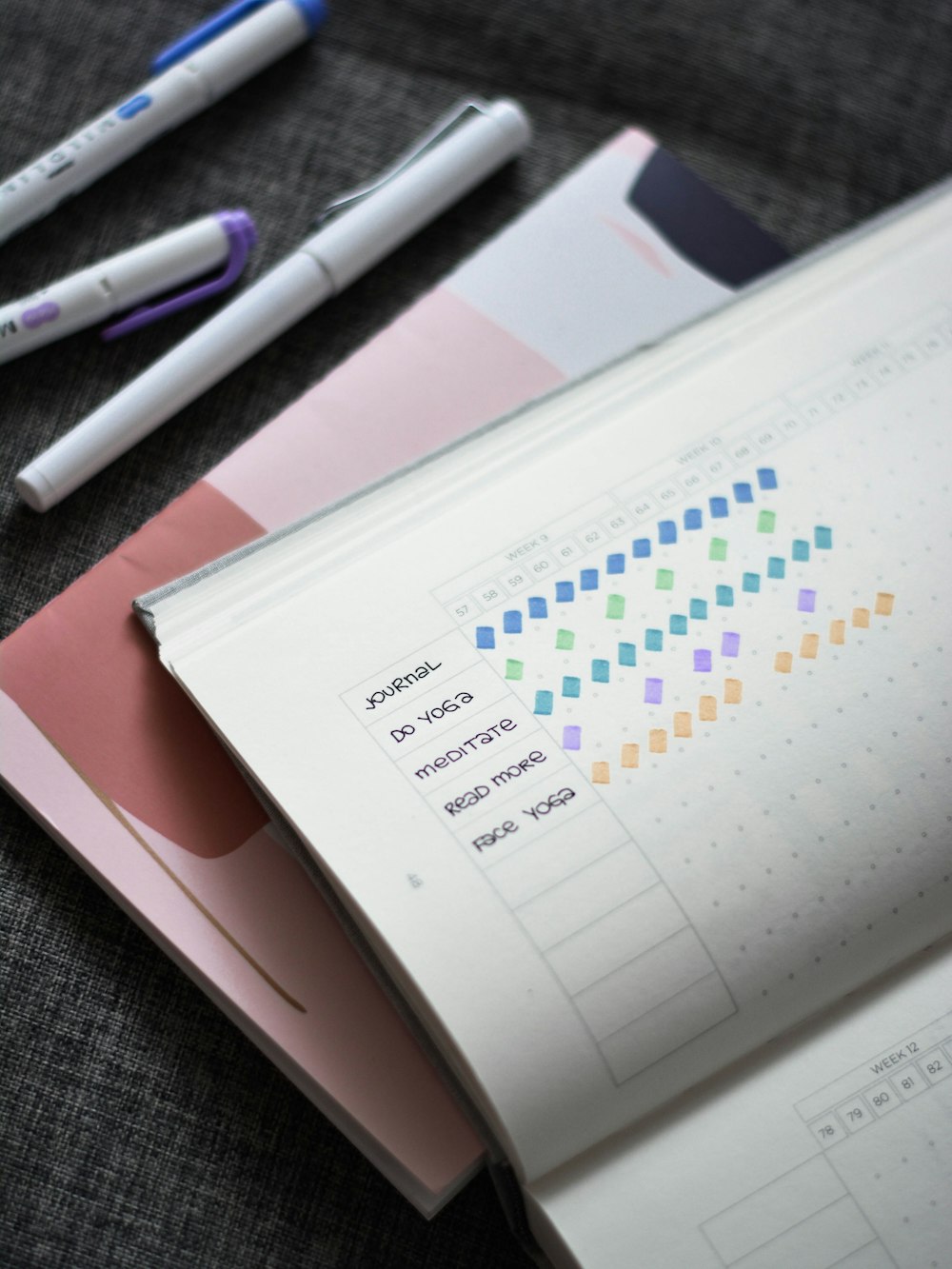Bullet journaling combines the elements of a day planner, diary, and written meditation to create a system that enables you to be more productive and achieve your personal and professional goals. A bullet journal (bujo for short) can be anything you want, with any layout you prefer.
The year may have already started- but the good thing about bujos is that you can start any time you want.
Think about the purpose of your journal
Consider what kind of lists may assist you in increasing productivity, achieving your goals or creating healthy habits. Are you a student who needs to keep track of assignments and meetings or keep up good habits? Your bujo would be a monthly/daily planner with habit tracking. Or maybe, are you a single mom with a small business? Your bujo could include to-do lists, appointments and a meal planner.
Gather your supplies
What you need:
- Journal
Look for a journal with thick, high-quality pages, lay-flat binding and a lightly dotted grid. If you don’t want to spend time numbering your pages (which will come in handy as you fill your journal out), buy a journal that already has numbered pages.
- The right pen
Look for no-bleed pens. If you want to be creative, stock up on felt tip pens or gel pens. As you develop your journaling style, the colours will come in handy.
- Highlighters
Another way to incorporate colour is to use highlighters. If you aren’t for the usual fluorescent colours, try pastel coloured highlighters, like the Stabilo 6 Pack Boss Highlighters from the Big W Catalogue, or browse through the London Graphic Centre online store.
These 3 stationery items are all you need, but if you want to be more creative, you can stock up on tape, stickers or watercolours. The bottom line is that if the project feels doable and inspirational to you, you’ll be more likely to persist with it—and this will look different for everyone.
Think about organisation
There are thousands of layout examples that you can find on Pinterest or Instagram to get you started. As you look for inspiration, you can try the layouts you see before actually committing them.
To make things easier for yourself, it’s good to have an index page to list all the items you will be tracking. On your index page, you will also need a tracking system. Make a set of symbols or marks to represent the status of your to-do list. For example, you could put a circle next to every item on your schedule. A finished task is a coloured-in circle. If it’s a work-in-progress, you could use a slash or line through the circle. An arrow in the circle could be items that need to be postponed and a cross for items/tasks that no longer need to be done.
To keep everything in check, use monthly and daily logs. A monthly log will have a calendar with a list of tasks, and a daily log will be the page where you write your daily to-dos. You might have half-page entries or full-page entries; depending on your schedule, it’s all up to you!
The appearance of your pages may change significantly as you progress—which is a good thing. The more you fill up your bullet journal, the more you’ll discover what works and what doesn’t.









